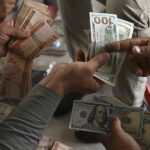The US Federal Reserve held interest rates steady on Wednesday, underscoring the cautious and vigilant stance of US monetary policy amid the prevailing uncertainty surrounding tariffs.
Speaking at a press conference following the Federal Open Market Committee meeting, Fed Chair Jerome Powell said on Wednesday that “If the large increases in tariffs that have been announced are sustained, they are likely to generate a rise in inflation, a slowdown in economic growth, and an increase in unemployment,” according to a transcript on the Fed’s website.
Powell’s comments and the Fed’s wait-and-see approach, while seemingly in line with market expectations, lay bare the central bank’s concerns about the potential repercussions of the US tariff policy on the broader economy.
The tariff policy has introduced an unprecedented level of complexity into the Fed’s monetary policy considerations. With inflation and employment indicators hovering in uncertain territory, the US economic landscape is clouded by a high degree of policy ambiguity.
The US still has a backlog of imported goods in inventory, which has so far shielded consumers from the immediate effects of tariff-induced price increases. However, once these stockpiles are depleted, the full impact of tariffs is likely to ripple through the supply chain, resulting in sharp price hikes for end consumers.
Moreover, while the labor market remains resilient, with employers adding 177,000 jobs in April, this figure cannot mask worries about the economy. The US economy contracted 0.3 percent for the first time in three years in the first quarter, according to the Commerce Department’s advance GDP report last week. Recession concerns have grown, and some businesses have reported pausing investment decisions given the uncertainty, according to a Bloomberg report on Thursday.
In this complex and uncertain economic environment, the Fed undoubtedly needs to be more cautious in formulating monetary policy. To get inflation under control, it may be necessary to adopt a tighter monetary policy, such as raising interest rates.
However, to stimulate investment and consumption to support the economy, rate cuts have been long anticipated. This dilemma vividly illustrates the challenges facing US economic policymakers.
The impact of the US tariff policy on the economy is complex and multi-faceted, influencing a wide array of sectors from manufacturing to retail, and affecting both businesses and consumers.
While monetary policy can provide some temporary relief, it is fundamentally insufficient to tackle the underlying issues that arise from the tariff regime. These issues, including persistent inflationary pressures and the looming threat of recession, are intricately linked to the tariff policy and its ripple effects throughout the economy.
It is important to acknowledge that the US economy is unlikely to immediately fall into recession due to Washington’s tariff policy, but the long-term ramifications still cannot be underestimated. This potential impact is reflected not only in economic data but also in the psychological expectations of businesses and consumers.
Businesses and consumers may adjust their behavior due to uncertainty surrounding the tariffs, which in turn could influence the long-term development of the economy. This is also why observers have said that the uncertainty surrounding these tariffs may ultimately prove to be even more detrimental than the tariffs themselves, as it creates an environment of unpredictability that can stifle investment and hinder economic growth.
Furthermore, the uncertainties do not solely originate from within the US; they are also significantly influenced by the international market’s reaction to US tariff policies. This uncertainty introduces an additional layer of complexity into an already volatile global economic environment, raising a critical question that looms large: how will countries subjected to high US tariffs respond?
Many affected nations are likely to recalibrate their monetary policies or even revise their trade strategies in direct response to the repercussions of US tariffs. Such adjustments could lead to a profound reshuffling of global trade patterns, potentially reshaping global supply chains that will erode the US fundamentals in the long term.













